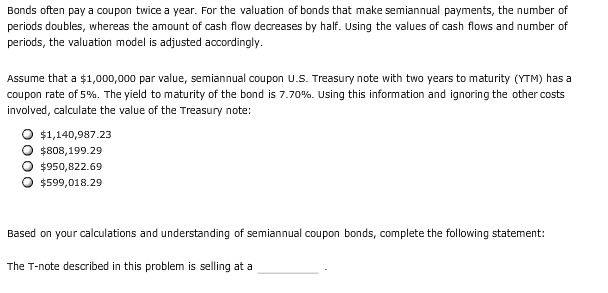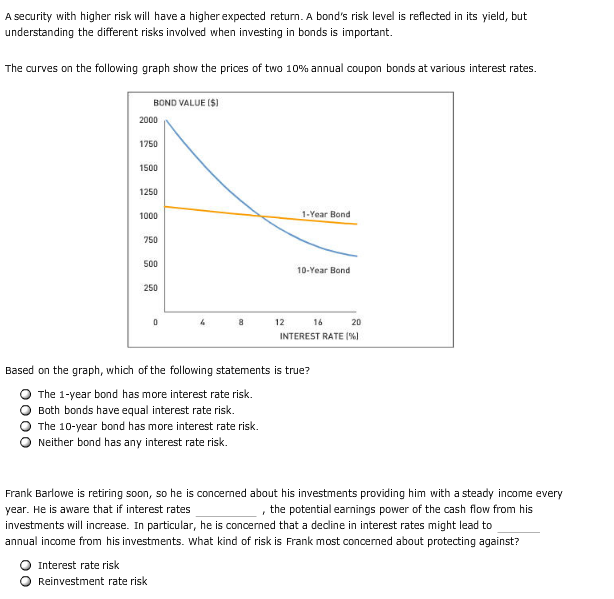


Bonds often pay a coupon twice a year. For the valuation of bonds that make semiannual payments, the number of periods doubles, whereas the amount of cash flow decreases by half. Using the values of cash flows and number of periods, the valuation model is adjusted accordingly. U.S. Treasury note with Assume that a $1,000,000 par value, semiannual coupon two years to maturity (YTM) has a coupon rate of 5%. The yield to maturity of the bond is 7.70%. Using this information and ignoring the other costs involved, calculate the value of the Treasury note: $1,140,987.23 $808,199.29 O $950,822.69 $599,018.29 Based on your calculations and understanding of semiannual coupon bonds, complete the following statement: The T-note described in this problem is selling at a A security with higher risk will have a higher expected return. A bond's risk level is reflected in its yield, but understanding the different risks involved when investing in bonds is important. The curves on the following graph show the prices of two 10% annual coupon bonds at various interest rates. BOND VALUE (S 2000 750 500 1250 1000 1-Year Bond 750 500 250 10-Year Bond 12 16 20 INTEREST RATE 1%! Based on the graph, which of the following statements is true? O The 1-year bond has more interest rate risk. O Both bonds have equal interest rate risk. O The 10-year bond has more interest rate risk. O Neither bond has any interest rate risk. Frank Barlowe is retiring soon, so he is concerned about his investments providing him with a steady income every year. He is aware that if interest rates investments will increase. In particular, he is concerned that a decline in interest rates might lead to annual income from his investments. What kind of risk is Frank most concerned about protecting against? , the potential earnings power of the cash flow from his O Interest rate risk O Reinvestment rate risk Answer the following question based on your understanding of interest rate risk and reinvestment rate risk. True or False: Assuming all else is equal, short-term securities are exposed to higher reinvestment rate risk than long-term securities. O True O False









